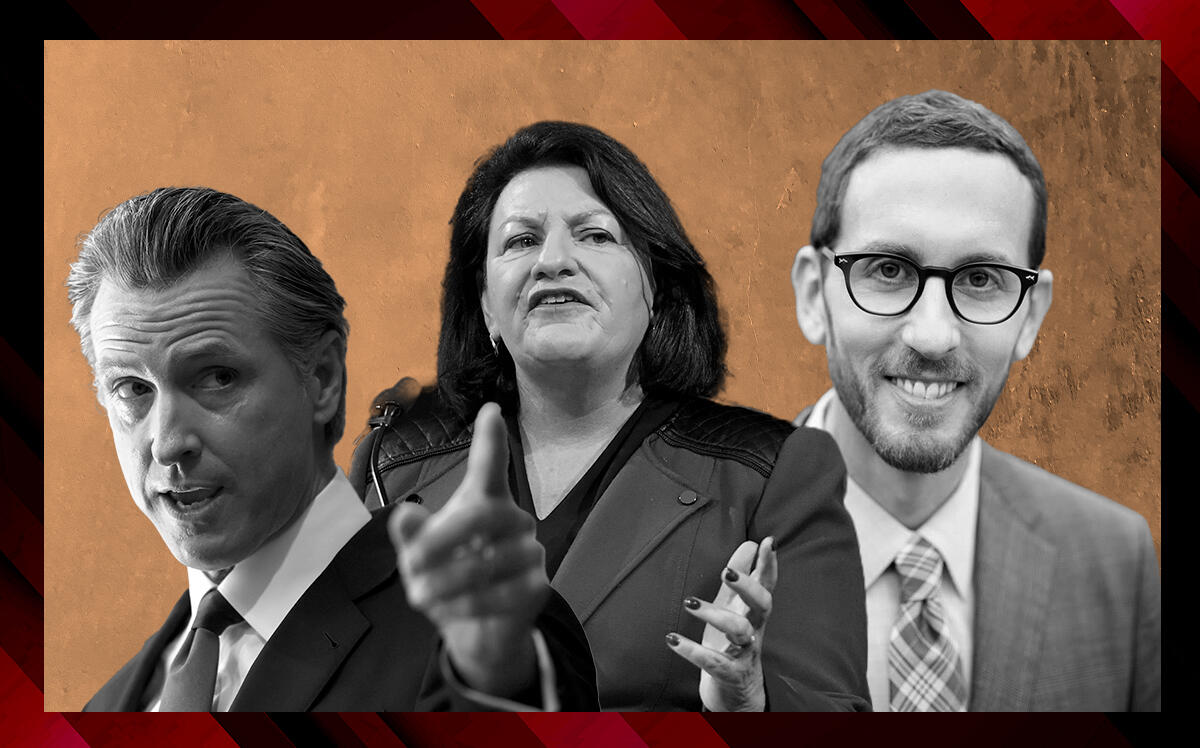 Bill to boost multifamily development targets gentrification
Bill to boost multifamily development targets gentrification
Trending
Newsom signs 2 controversial measures to boost housing. Will they be consequential?
SB 9 and 10 eliminate most single-family zoning in California

Nearly three years after Gov. Gavin Newsom’s inauguration promise to launch “a Marshall Plan for affordable housing,” the cavalry has yet to arrive. California is still short millions of homes and Los Angeles is ranked the second least-affordable city in the nation, just behind New York.
Past proposals that would allow for multifamily developments near transit centers and would mandate four-plex residential zoning minimums have gone down in flames in the Democrat-dominated legislature.
But in late August the Assembly and Senate came together and passed perhaps California’s most ambitious housing development bill in years: Senate Bill 9.
On Thursday, Newsom signed the measure into law. It allows owners to build up to four residential units on most properties currently zoned as single-family residential lots, a category that includes more than two-thirds of the state’s residential land.
The governor also signed Senate Bill 10, which allows local governments to speed the process to upzone up to 10 units on certain single-family-zoned plots near transit.
“California’s severe housing shortage is badly damaging our state, and we need many approaches to tackle it,” said Sen. Scott Wiener of San Francisco in a statement following the signings. Wiener authored SB 10 and co-authored SB 9; he also spearheaded the earlier unsuccessful efforts to rezone neighborhoods.
The measures are based on a premise widely supported by economists and urban planners: California desperately needs millions more homes in order to have any shot at easing an affordability crisis that’s throttling the state’s middle class.
Read more
 Bill to boost multifamily development targets gentrification
Bill to boost multifamily development targets gentrification
 California legislature sends zoning bills to Governor Gavin Newsom’s desk
California legislature sends zoning bills to Governor Gavin Newsom’s desk
While no one has denied the state’s housing crisis, the measures provoked a backlash. Opposition came predictably from NIMBY groups but also some affordable housing advocates who say the legislation will be a windfall for developers and an existential threat to working-class communities.
But housing experts and even supporters of SB 9 and 10 say the long-term impact will be relatively minor compared to California’s massive need.
“It’s not a panacea,” said David Garcia, policy director for the Terner Center for Housing Innovation at the University of California, Berkeley. The group has analyzed SB 9’s likely impact and supported its passage. “I would say it is a modest, incremental improvement upon California’s existing land use policy.”
Released in July, the 21-page report determined that SB 9 could create 700,000 housing units, although the number that actually gets built would likely be smaller.
“For the majority of single-family properties, we find the most financially viable outcome is not to pursue any development whatsoever,” the report concluded.
Conversions of single units into duplexes would also be far more common than lot splitting, according to the report, and new development would be relatively evenly distributed throughout the state. And of California’s existing 7.5 million single-family zoned land parcels, SB 9 would pave the way for financially viable development on just 410,000 of them, about 5 percent.
Meanwhile, California needs between 1.8 million and 3.5 million new homes by 2025 to slash the rising housing costs and escalating homelessness, according to state and private reports issued in late 2019.
Still, groups who oppose zoning changes that allow for more construction in single-family neighborhoods see impending doom.
The San Francisco-based nonprofit Livable California brands the legislation as a radical attack on middle-class Californians — “the beginning of the end of homeownership in California,” it says.
Livable California board member Isaiah Madison said SB 9 “takes away local control from cities.” Madison is a young political activist who lives in Crenshaw, a majority-Black South L.A. neighborhood that has been the focus of a gentrification debate. He argues that upzoning communities like Crenshaw will harm middle-class Black families, most of whom aren’t interested in developing their properties.
“I can’t go tell these grandmas” who have lived in the neighborhood for decades that “they need to sacrifice their quality of life to build unaffordable housing for yuppies from Culver City,” he said.
SoCal cities opposed
In recent weeks dozens of local municipalities and elected officials, including the L.A. City Council and mayors of 27 cities in the San Gabriel Valley also opposed the legislation. They cited concerns about real estate speculation and residents’ quality of life, and objected to measures that wrest power from local authorities.
“Sacramento has lost its credibility in L.A. with land use,” City Council president Nury Martinez said at a meeting last month, when the Council passed a resolution opposing SB 9 and SB 10. “If they want to provide tools to continue to build, then talk to us about doing it before they introduce bills to destroy our neighborhoods.”
Various housing and community groups also declared their opposition. They said the measures, which do not include affordable housing requirements, will serve as gentrification drivers or will exacerbate the state’s ecological problems because suburban development would cut trees and reduce municipal water supply.
“It’s really frightening,” said Casey Maddren, president of United Neighborhoods for Los Angeles, which opposed SB 9. “The legislature doesn’t seem to even want to consider environmental impacts.”
But recent amendments could blunt SB 9’s impact.
In August, Senate President Pro Tem Toni Atkins added a requirement that property owners who seek a lot split sign an affidavit promising they will live in one of the properties for at least three years. The change — requested by the California Association of Realtors — is intended to stave off developer-driven spec investment and gentrification. But it also further limits the number of new units that SB 9 will end up adding to California’s housing supply — and any potential broader effect the legislation could have on soaring prices in markets like L.A. County.
“If it’s going to have an impact on pricing, it would have to be downward, just because you’re adding more supply,” said Josh Kaplan of Transwestern Real Estate Services, which provides leasing and other advisory services. “But I just don’t see that happening, just because there’s so much money chasing so few purchase opportunities.”




